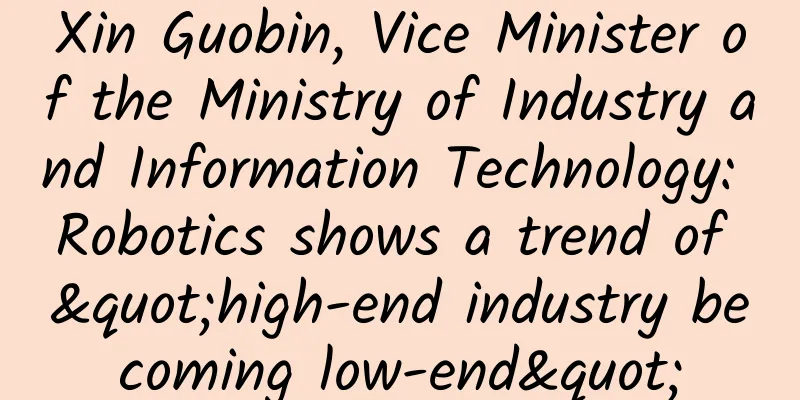Digging up the roots | Can blood transfusions “prolong life”? Still need to be viewed with caution

|
gossip Aging is a life process that everyone will experience. Aging means the decline of tissue and organ functions, and the risk of aging-related diseases also increases. Therefore, humans seem to have a natural aversion to aging, and fighting aging has been an eternal topic for humans since ancient times. In order to delay aging, prolong life, and reduce the occurrence of aging-related diseases, scientists around the world have conducted a lot of research. As early as the primitive period, humans realized the importance of blood to life and were full of awe and desire for blood. Blood is often given a mysterious color. This year, American technology tycoon Bryan Johnson began a "blood transfusion" experiment with his father and son, hoping to reverse aging by transfusing young blood, which sparked heated discussions. For a while, news about the "blood transfusion" therapy emerged in an endless stream, and many people optimistically believed that "blood transfusion" could prolong life . Copyrighted stock images, no reproduction is authorized So, can continuous transfusion of young people's blood really achieve "longevity"? Is there any scientific basis for this sensational method? analyze Is there any scientific basis for “blood transfusion” therapy to delay aging? The news media's claim that "blood transfusion" can fight aging originated from a study published in Nature by Irina M Conboy and others in 2005. The study used surgery to establish a heterochronic parabiosis (HPB) model between young and old mice, allowing them to share blood, organs and environment to observe the impact on aging. The "blood transfusion" operation referred to by the media is the HPB technology used in this study. The experimental results found that the internal environment of young mice promoted the muscle regeneration ability and liver proliferation ability of old mice. This promotion effect was achieved by activating local precursor cells in the tissues of old mice. The study concluded that a young systemic environment can rejuvenate aging precursor cells. After the publication of this paper, it triggered a wave of research on young blood to delay aging, and later gradually became a foundational work in this field. In 2022, Irina M Conboy's team published further research results in the journal Nature Metabolism. They exchanged blood between young and old mice and found that the blood of old mice induced cellular and tissue aging in young mice after the exchange. If the old mice were given anti-aging drugs (dasatinib + quercetin) before the blood exchange, the induction of aging would be eliminated, thereby weakening the pro-aging effect of old blood on young mice. Therefore, the researchers pointed out that cellular senescence is neither a simple response to increased stress and damage with age nor a chronologically ordered cell-intrinsic phenomenon. Instead, senescence is rapidly and efficiently transmitted from old blood to young mice. Clearing out senescent cells that accumulate with age may rejuvenate the circulating blood of old mice and improve the health of multiple tissues in the body (Figure 1) . Figure 1 The aging system environment can induce rapid aging of multiple tissues in young mice (Image from Jeon OH, et al. Nat Metab. 2022;4(8):995-1006.) Recently, the research team of Vadim N. Gladyshev of Harvard Medical School and James P. White of Duke University published a research paper titled "Multi-omic rejuvenation and life span extension on exposure to youthful circulation" in the journal Nature Aging. Through comprehensive epigenetic clock and RNA sequencing analysis, the study found that the epigenetic age of aged mice was significantly reduced after 3 months of HPB, and the improvement effect persisted even 2 months after the end of HPB. Moreover, the longer the circulatory system exchange time, the more obvious the improvement effect. The results of this study indicate that the decline in biological age caused by long-term allogeneic symbiosis is achieved in part through epigenetic and transcriptome remodeling (Figure 2). This is the first time that scientists have confirmed that connecting the blood circulation of old mice to the blood circulation of young mice can extend the lifespan of mice. The epigenetic clock mentioned above is a method to analyze and measure physiological age based on the dynamic changes of DNA methylation during the aging process. Nowadays, epigenetic clocks are widely used in the field of anti-aging as an important biological indicator for quantifying aging to study the influencing factors related to aging, thus creating a new era of molecular research in the field of aging. Figure 2 Long-term parabiosis can significantly improve the lifespan and physiological health of aged mice (Image from Zhang B et al. Nat Aging. 2023) In May 2022, the research groups of Liu Guanghui and Qu Jing from the Institute of Zoology, Chinese Academy of Sciences, in collaboration with the research group of Zhang Weiqi from the Beijing Institute of Genomics, Chinese Academy of Sciences, published an online research paper titled "Heterochronic parabiosis induces stem cell revitalization and systemic rejuvenation across aged tissues" in the journal Cell Stem Cell. The study established a heterologous symbiotic model between old and young mice, mapped the single-cell transcriptome at the system level, and conducted in-depth analysis of seven tissues and organs, including bone marrow, spleen, peripheral blood, brain, liver, skeletal muscle and skin. The study found that exposure to young blood can effectively improve the tissue microenvironment of different organs in elderly individuals and restore the vitality of a variety of adult stem cells. Among them, hematopoietic stem/progenitor cells (HSPC) are one of the cell types that are particularly sensitive to young blood. Young blood can promote the "rejuvenation" of aging HSPC by upregulating the expression of chemokine CCL3. This study revealed the panoramic cellular changes in old and young individuals caused by allosymbiosis at single-cell resolution, and revealed the key mediating factors that promote the regeneration of old tissues in the young body environment, providing important clues and ideas for the development of key markers and new strategies for aging warning and intervention (Figure 3). Figure 3 Systems biology study on how young blood promotes rejuvenation of multiple tissues in the body (Image from Ma S, et al. Cell Stem Cell. 2022;29(6):990-1005.e10) These research results demonstrate the fluctuation and plasticity of biological age through the heterologous symbiosis model. At the same time, the researchers also pointed out that the anti-aging effect of long-term heterologous symbiosis is achieved through a variety of complex mechanisms, and some issues in the study still need more and more detailed experiments to verify. Anti-aging based on "heterologous symbiosis" is not completely equivalent to replenishing young blood in an aging body. Is it feasible to apply “blood transfusion” therapy to humans? Although the anti-aging effect of "blood transfusion" therapy still needs more solid experimental evidence, some people can't wait to be experimental mice to try "blood transfusion" therapy. American technology tycoon Bryan Johnson is one of them. It is reported that in April this year, Brian Johnson, his 17-year-old son Talmadge, and his 70-year-old father Richard went to a clinic called Resurgenc Wellness in Dallas, Texas, to participate in a "blood transfusion." Brian Johnson's "blood transfusion" experiment is still different from the xenobiotic technology used in the above-mentioned mouse experiment. The process of Brian Johnson's "blood transfusion" is not complicated. Brian Johnson's son, Johnson Jr., will have 1 liter of blood drawn out, which accounts for about one-fifth of the total blood in the human body. The blood will first be removed from the red blood cells, white blood cells and platelets in the machine, leaving only translucent plasma. Brian Johnson will transfuse his son's plasma into his body, and then repeat the above process to transfuse his own plasma to his father, Johnson Sr. It can be seen that Brian Johnson's "blood transfusion" is to inject the plasma of a young person into the body of an older person. In fact, it is just a "blood transfusion" and does not directly connect the blood circulatory systems of the two like the xenobiotic technology. From the beginning, Brian Johnson's "blood transfusion" plan was controversial. On the one hand, medical experts and official agencies had doubts about the safety of "blood transfusion" therapy. Some researchers warned not to choose plasma therapy for healthy people, saying that this attempt was "crude, without evidence, and relatively dangerous." After six "blood transfusions", Brian Johnson announced after his 30-member medical team's evaluation that no benefits of "blood transfusion" were found, and terminated the therapy on July 6. Copyrighted stock images, no reproduction is authorized It can be seen that the "blood transfusion" therapy for the purpose of prolonging life is not a practical way for humans. Not to mention the potential safety hazards in the "blood transfusion" process. For example, non-hemolytic fever reaction, allergic reaction and allergic reaction, hemolytic reaction, bacterial contamination, circulatory overload, bleeding tendency, acid-base imbalance, transfusion-related acute lung injury and transmitted infectious diseases. In addition, the mechanism of reversing aging by connecting the blood circulatory systems of young mice and old mice through the xenobiotic technology is very complex, and we still do not fully understand its specific molecular mechanism. Simple "blood transfusion" therapy is not equivalent to allogeneic parabiosis technology. Is it possible that rash "blood transfusion" may introduce risks from the blood donor through some unknown mechanism? It is still unknown. Therefore, more scientific research and clinical trials are needed to determine its true effects and risks. in conclusion Animal experiments are only a process of scientific experiments and are still far from practical application. When exploring areas related to health and longevity, scientific methods and safety should be our primary considerations. The next research focus is to explore which proteins or metabolites in the blood circulation system cause such results. These specific molecular mechanisms that have yet to be explored are the real hope for human beings to "prolong their lifespan." Author: Shuai Wang, MD, PhD, Assistant Researcher, Beijing Chaoyang Hospital, Capital Medical University Reviewer: Lu Min, Associate Chief Physician, Institute of Hematology, Chinese Academy of Medical Sciences and Peking Union Medical College References: [1] Conboy IM, Conboy MJ, Wagers AJ, Girma ER, Weissman IL, Rando TA. Rejuvenation of aged progenitor cells by exposure to a young systemic environment. Nature. 2005;433(7027):760-764. [2] Jeon OH, Mehdipour M, Gil TH, et al. Systemic induction of senescence in young mice after single heterochronic blood exchange. Nat Metab. 2022;4(8):995-1006. [3] Zhang B, Lee DE, Trapp A, et al. Multi-omic rejuvenation and life span extension on exposure to youthful circulation [published online ahead of print, 2023 Jul 27]. Nat Aging. 2023;10.1038/s43587-023-00451-9. [4] Ma S, Wang S, Ye Y, et al. Heterochronic parabiosis induces stem cell revitalization and systemic rejuvenation across aged tissues. Cell Stem Cell. 2022;29(6):990-1005.e10. Planning丨Zhong Yanping Layout by Li Mengxin Proofread by Li Xin Final Review丨Zhong Yanping This article is produced by "Science Facts" (ID: Science_Facts). Please indicate the source when reprinting. The cover image and the images in the text are from the copyright gallery. Reprinting and quoting may cause copyright disputes. |
<<: Plants vs. Zombies: The Brain, the Most Thoughtful Virus →
>>: National Mooncake Awards! Which of these 10 mooncakes do you like best?
Recommend
Cochlear implants are included in Shanghai's medical insurance! A cochlear implant costs 200,000 yuan, why is it so expensive?
Since October this year, cochlear implants have b...
Snowfall! Rainfall and cooling! Severe convection is coming. How can we prevent it?
Large-scale rain and snow weather is coming! Heav...
How to build and promote Weibo Fans advertising account?
The users on Weibo Fans Channel are all young use...
Lanzhou recipe mini program function, how much does it cost to develop a home cooking mini program?
As those born in the 1990s and 2000s have started ...
If you throw an egg from the space station towards the earth, will it hit the earth successfully?
This article is based on answering similar questi...
New advertising methods, Q-series homepage information flow advertising product capabilities and cases
1. Catering to user experience , information flow...
From ancient times to the present, has human beings themselves been evolving?
As we all know, technology has been constantly im...
【Creative Cultivation Program】T-shirts become cotton clothes? Why did autumn suddenly come in one day?
Have you worn long johns today? A few days ago, w...
No need for surgery? This technology can "freeze" breast tumors to death!
Breast cancer is the most common cancer affecting...
Is bamboo a tree or a grass? No! It is actually a "close relative" of rice
Review expert: Xia Xiaofei, Secretary General of ...
New local cases in Xi'an: authoritative interpretation of when the turning point will come and how to prevent and control it
According to Xinhuanet on the morning of the 28th...
Small brands want to break through, but what they lack is not methods, but problems...
Someone left me a message before, asking if I cou...
The Self-cultivation of a "Bartender"
Let’s first look at this question: There is a cla...
How much does a bull whip cost? How much does bull whip cost per pound in the market?
Many people should know the special effects of bu...
How to run a high-quality community?
Unknowingly, many years have passed since I gradu...









